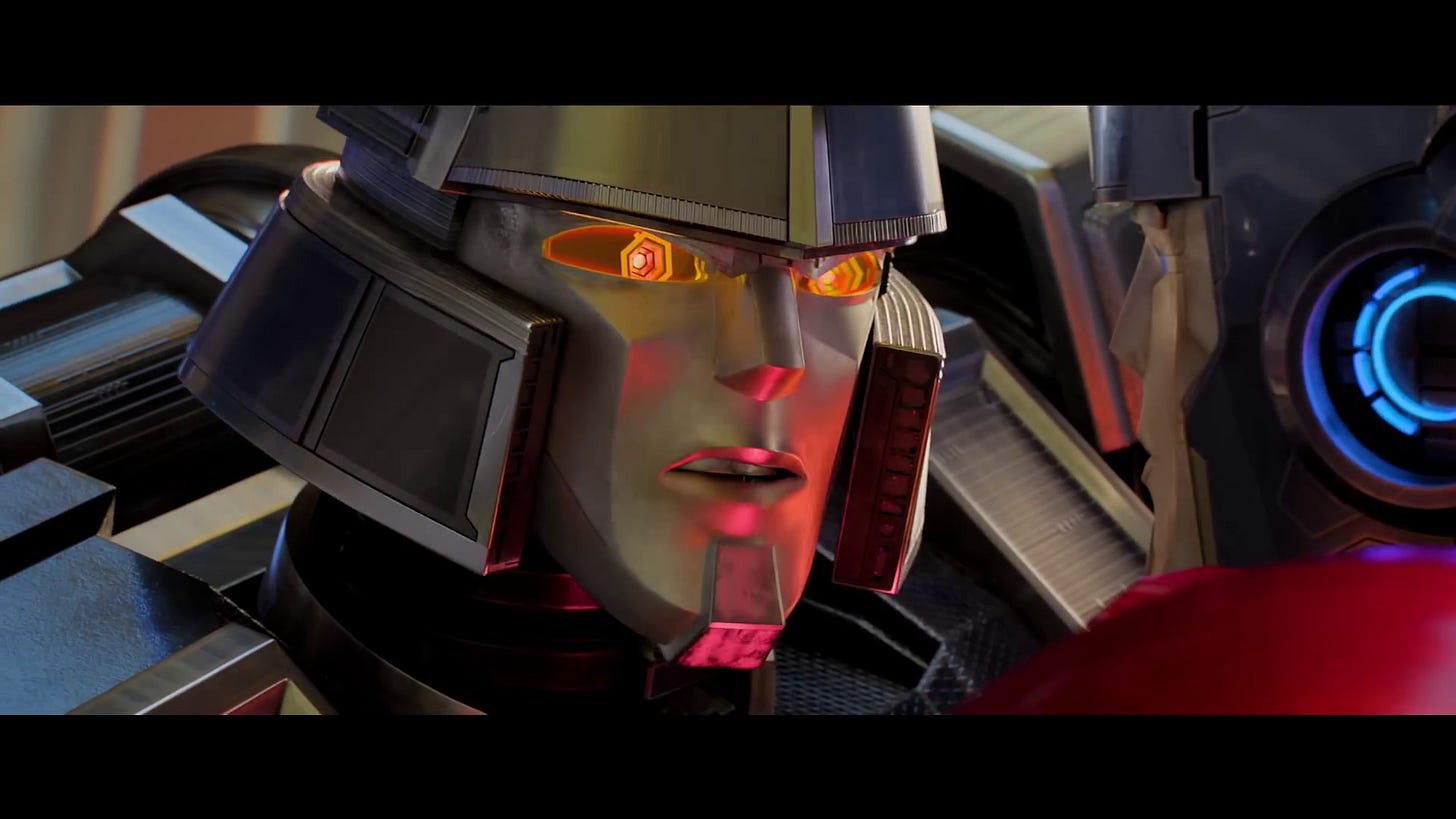"Transformers One" Does "The Matrix" for Today's Teenagers
The movie's messaging overcomes its subtle product pitches
In this movie age of the great 1980s rehashes, where movie studios scavenge the scraps of Gen-X fare to build new junk, it’s entirely appropriate that we get a Transformers cartoon.
Indeed the Hasbro logo preceding the film raised my cynical defenses. What products are they pitching to us here? Last year’s “Barbie” initiated Mattel’s marketing scheme to make product-based movies. In the last two years, we’ve also had a Nike shoe movie, a Super-Mario movie, Tetris, Ferrari, Gucci, Dungeons and Dragons, and a Pop-Tart movie.
This is only the beginning. But “Transformers One”?
It’s not a Michael-Bay mindless robot-bashing flick, although he’s executive producer here, as is Steven Spielberg. I went to this because of the promising animation. Lately, one saving grace of new animated films is that the cool art kids have been allowed to run wild with their imaginations. Think the Spiderverse movies, “Puss n Boots 2,” or last year’s “Teenage Mutant Ninja Turtles.”
“Transformers One” isn’t quite at their unique aesthetic level, but it’s still sort of a pleasure to look at, when it’s not incomprehensibly whizzing by at a speed-metal pace during action scenes. I was fooled countless times that what I was looking at was genuine metal.
The tale here is an origin story, and for those in the know, it’s going to be a tragedy. It begins with two small working-class friends, Orion Pax and D-16, best buddies and subjected to brutal work by their planet’s Powers-That-Be. Those who know — like me, having watched the ‘80s cartoon series religiously as a kid — know that these two characters become mortal enemies: the eternally noble leader Optimus Prime and the eternally hideous villain Megatron.
How do these two best buddies turn into mortal enemies?
I think the plot develops this cleverly for budding young adults. The alien-world of these transformers robots is under colonial domination, and it’s been subjugated by an ignoble political lie. The two young hero miners have to figure this out. They are praised for being optimistic, for being rebellious and curious, and for envisioning a better future. This is classic good-old-boy American fare, the spirit of ‘76 living on in outer-space robot land.
To give something away, though I’m spoiling far less than all the trailers I watched, the two robots discover that their beloved leader, Sentinel Prime, is hoodwinking their entire society. The boys are devoted followers and admirers of Sentinel. But — and any viewer can sense this immediately — he’s a slimy politician. They end up figuring out how cruel his sociopolitical and economic deceptions are.
So they fall down the rabbit hole as it were. It’s appropriate, too, that this movie features Laurence Fishburne as the voice of a character who tells them The Truth, ala the redpill scene in “The Matrix.”
What will Orion Pax and D-16 do with the fact that they are now disillusioned? They’ve learned that they’ve believed in illusions, and now they face a harsher reality, knowing a troubling truth about everything.
Knowing where these two end up, as Optimus Prime and Megatron, you know where this will go.
Still, for me, this is among the greatest lessons young people can face. You will discover uncomfortable truths, you will see that there is some measure of social deception involved in covering them up, and you can become jaded and cynical rather quickly.
For those reasons, this film transcends any product-pitch it might have for Hasbro toys. It’s just a cool picture to look at, voiced by name actors that, if you don’t look act the cast-list beforehand, will surprise. I can attest that viewers who know nothing about Transformers can enjoy this, and people who know deep things, like me, can too. I took my 10-year-old son to this. He’s a harsher critic than me, yet he quite liked it.
So I can’t believe I’m saying this: I’m looking forward to the sequel, which is inevitable.






